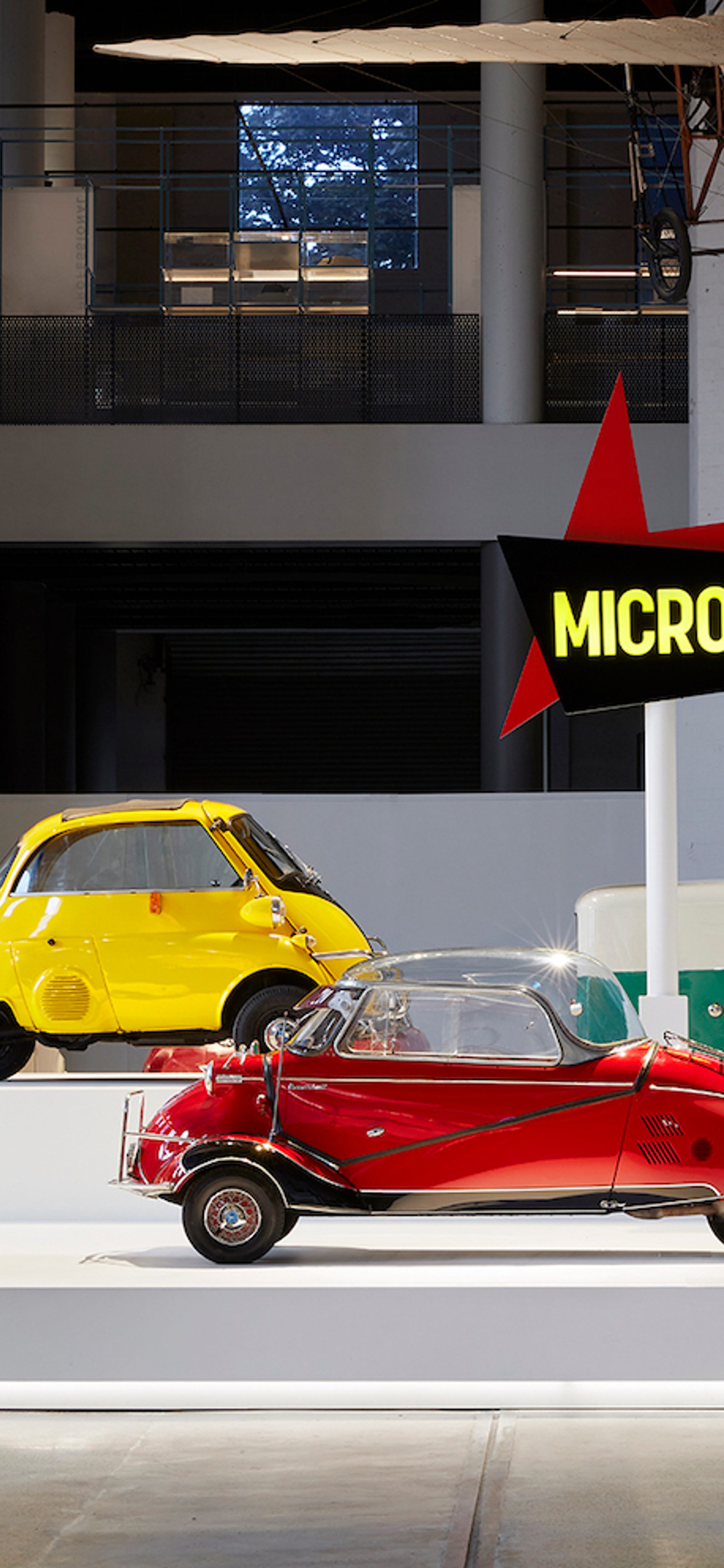
Microcars
5 November 2021 – 7 August 2022
Using scooter engines and super-light bodies, microcars hit their peak popularity in the years directly after World War II, when factories in Germany and Italy were no longer making military aircraft and re-tooled to meet the demand for economical cars. This exhibition featured microcars from the Powerhouse collection and a selection of loans from notable Australian collectors.
Microcars hit their peak popularity in the years directly after WWII when factories in Germany and Italy, no longer making military aircraft, retooled to meet another demand: freedom – once cheap and available to the masses. Tiny, economical cars were perfect for that environment. Using scooter engines, and super-light bodies, Messerschmitt, BMW, Heinkel, and Lambretta popularised the microcar. Their appealing (if cramped) aesthetic quickly spread across the world: Britain, Japan, and Australia all created versions of the microcar. Most notably in Australia were the Goggomobil Dart and the most versatile of microcars, the Zeta Runabout.
Made in South Australia, the Zeta Runabout was designed by engineer and entrepreneur Harold Lightburn in 1964. His company, Lightburn and Co, manufactured wheelbarrows and washing machines, and it was their success in the use of lightweight fibreglass that led them to design a small car using that material. Taking note of the shortcomings of other microcars – mainly the lack of any storage space – Lightburn had given the Runabout actual luggage space.
This exhibition featured microcars from the Powerhouse Collection and a selection of loans from notable Australian collectors. It also examined contemporary electric and hybrid microcars such as the Renault Twizzy and the Smartcar, which were seeing a resurgence due to the damaging impact large petrol engine vehicles were having on our world. The exhibition has now concluded.
















